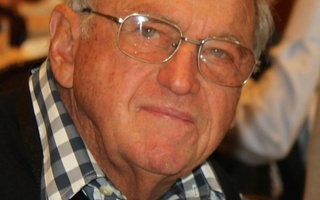Researchers at Harvard Medical School, MIT, and the Wyss Institute for Biologically Inspired Engineering have discovered a new synthetic process to construct 3D metal nanoparticles using DNA as a mold, according to a study published in Science earlier this month.
By enabling the construction of nanoparticles in user-specified shapes out of materials like silver or gold, the breakthrough offers a range of applications in solar cells, disease detection, and laser technology.
“Using DNA as a nano-foundry, you can fabricate nanomaterials, 4,000 times smaller than a tiny paper sheet, as simple as growing something in your garden,” said lead author Wei Sun, a postdoctoral scholar in the Wyss' Molecular Systems Lab.
According to the Wyss Institute press release, the particles created were as small as 25 nanometers. A sheet of paper is approximately 100,000 nanometers thick.
“A really important question that was unanswered for years was how do you manipulate matter at all on the nanoscale,” said co-author and former Crimson news editor Amy Guan '12. “[The research] is important because it shows a very elegant approach to creating the kind of shape you want.”
The process begins by using software to transfer the target shape into DNA mold design with a user-specified shape. Next, researchers use the mechanical simulation software to evaluate its mechanical properties. A gold seed is implanted within the mold and grows by absorbing a solution.
A useful analogy in understanding the process might be that of growing cube-shaped Japanese watermelons, in which watermelons are grown within a plexiglass container, according to the press release.
“Our nanocasting is based on similar consideration,” Sun said. “A nanoparticle seed is grown exclusively within the mold, which confines the nanoparticle final shape complementary to the cavity shape in the mold.”
This project has been important to Sun personally.
“I'm delighted to make the first demonstration of this strategy after years of working,” Sun wrote. “[But] we still need to keep working on this direction to merge the gap between what we have done in the lab and the requirements for future device applications.”
Read more in University News
Researchers Develop Bacteria Repellant for Medical EquipmentRecommended Articles
-
Wyss Launches CompetitionThe Wyss Institute for Biologically Inspired Engineering will host its first undergraduate science competition this year, encouraging students to combine biology and nanotechnology to solve global challenges.
-
Preview: The Shape of ThingsThis Harvard-Radcliffe Dramatic Club production, directed by Allen J. MacLeod ’14, takes a sparse, character-focused look at such unsettled thematic questions through the lens of a rapidly disintegrating relationship.
-
Wyss Institute Aims to Transform Drug TestingWith the aid of pharmaceutical companies and multiple federal agencies, researches at the Wyss Institute have undertaken research that could revolutionize the drug testing process.
-
 Largest Donor to Harvard Doubles Gift to Wyss Institute
Largest Donor to Harvard Doubles Gift to Wyss Institute -
Smart CharityHarvard serves as a vital conduit between research funding—public or private—and the solutions to make our world better.
-
Wyss Study Could Be Genetics BreakthroughA recent study from Harvard’s Wyss Institute for Biologically Inspired Engineering has uncovered features of the genetic code that may end a long-standing controversy in molecular biology and revolutionize the way many drugs and biofuels are currently produced.













